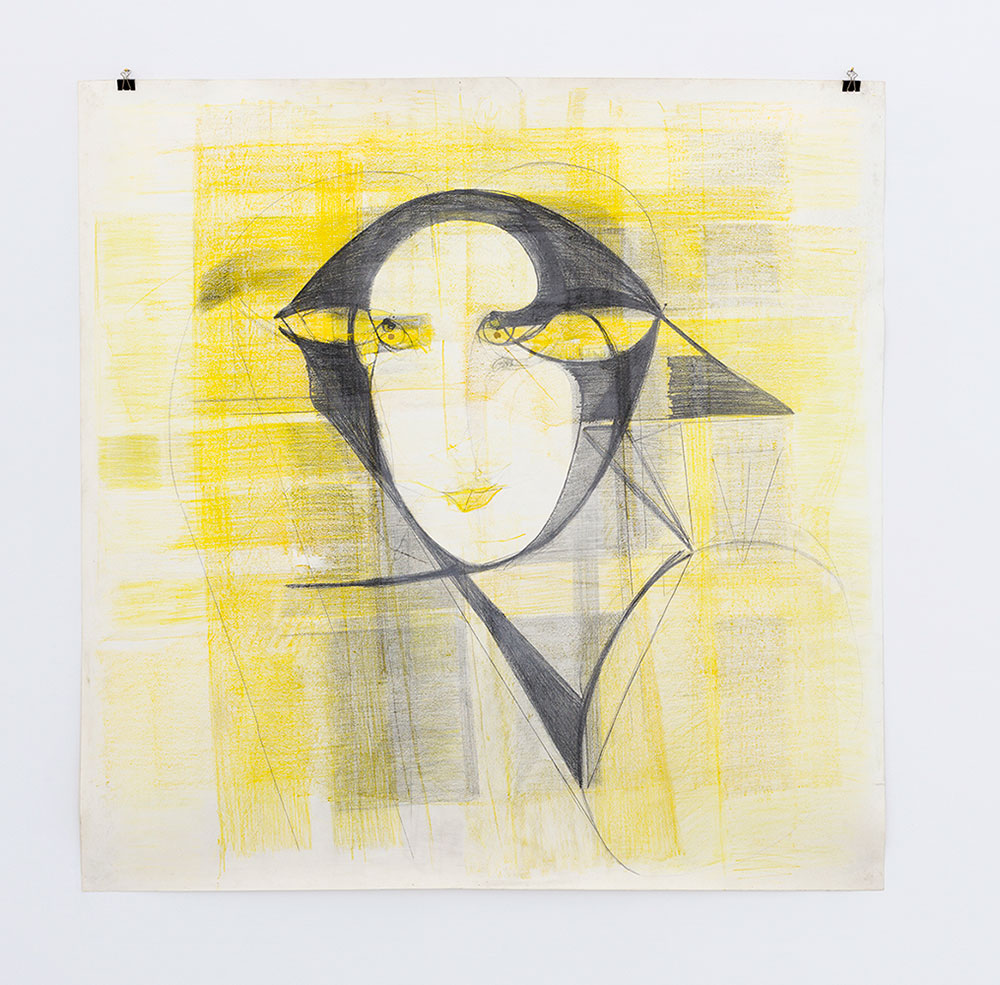ART-PRESENTATION: Marisa Merz
 Marisa Merz is the only woman artist associated with Are Povera. During her long marriage to Mario Merz she resolutely managed her own career while rarely leaving his side and, occasionally, operating as his anonymous collaborator. Still, it is her tenacious personal vision that has resulted in a body of work that is both mystic and domestic.
Marisa Merz is the only woman artist associated with Are Povera. During her long marriage to Mario Merz she resolutely managed her own career while rarely leaving his side and, occasionally, operating as his anonymous collaborator. Still, it is her tenacious personal vision that has resulted in a body of work that is both mystic and domestic.
By Efi Michalarou
Photo: Bernier/Eliades Gallery
The exhibition of works by Marisa Merz at the Bernier/Eliades Gallery in Athens features painting, sculpture, and works on paper, highlighting her pioneering role in the art scene since the middle 60s as a central figure in the Arte Povera Movement. Knitting copper, draping aluminum, modeling clay, kneading wax, Mariza Merz has created a body of work that has the persuasiveness of myth, evoking as it does the transformational caprices of Calypso and the patient, heroic weaving of Penelope. Moreover, in her works, the image of the face emerges as a symbol of the eternal human spirit. These faces are characterized by fleeting lines and abstract forms. Merz’s figures defy the expressions of individual identity and resemble ghosts while seeming as they are detached from any kind of social or narrative framework as if floating for ever through time. Among these works are featured also pieces from her recent major retrospective “The Sky is a Great Space” that was initially presented at the Metropolitan Museum of New York and then travelled to important museums all over the world. Merz’s earliest work, begun around 1965 in the house she shared with husband Mario Merz, is a tangle of molded aluminum hung from the ceiling that combined sharp, rough metal edges with soft, biomorphic contours, expanding the existing conception of a ‘mobile’ into a colossus. Merz’s first three exhibitions all took place in Turin, Italy, in 1967. The range of creativity displayed was startling and culminated in the installation of her multipart “Untitled (Living Sculpture)” at the Avant-Garde Piper Club. What followed was a sustained run of exhibitions in which she created dense installations filled with delicate moments of personal grace, such as cups of salt, rolled and bound blankets, little slippers of copper, and the woven-nylon name of her daughter Bea. As the ‘80s approached, more and more complex knitted copper webs began to appear. She also began drawing and sculpting heads that, in their explicit oddness and ceremonial solemnity, suggest nothing so much as votive offerings from a lost culture. With their blinded eyes, they also allude to the blind seers of antiquity, such as Tiresias, who foresaw the fall of Oedipus. Her drawings of heads, while obviously related, are direct descendants of the Italian Futurist line, seemingly spinning like planets yet resolutely calm in their orbit. Unlike the sculpture, they are often sly and flirtatious, almost giddy in their energized penciled coils. Operating within their own temporal logic, these works powerfully mirror Merz’s overarching artistic belief in the enduring effect of each piece beyond its material realization and the constraints of time and place. In soft wax or sheets of metal, Merz’s images are like primordial evocations, enigmatic yet intimate. In this exhibition, works of knit copper punctuate Merz’s drawn figures, pulling the viewer between figurative identification and phenomenological experience of abstract sculptures.
Info: Bernier/Eliades Gallery, 11 Eptachalkou Street, Thisio, Athens, Duration: 13/12/18-7/2/19, Days & Hours: Tue-Fri 10:30-18:30, Sat 12:00-16:00, www.bernier-eliades.com

